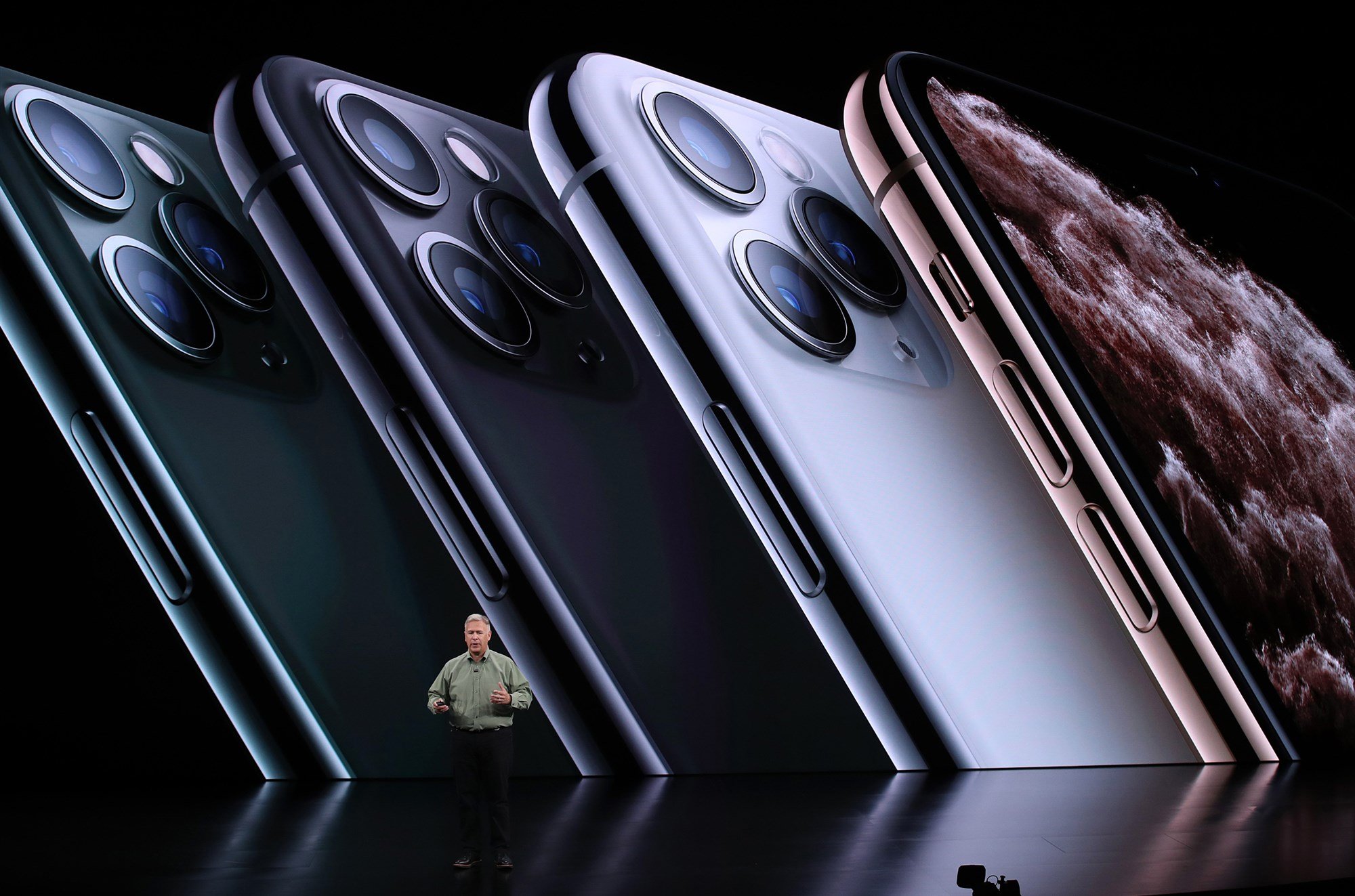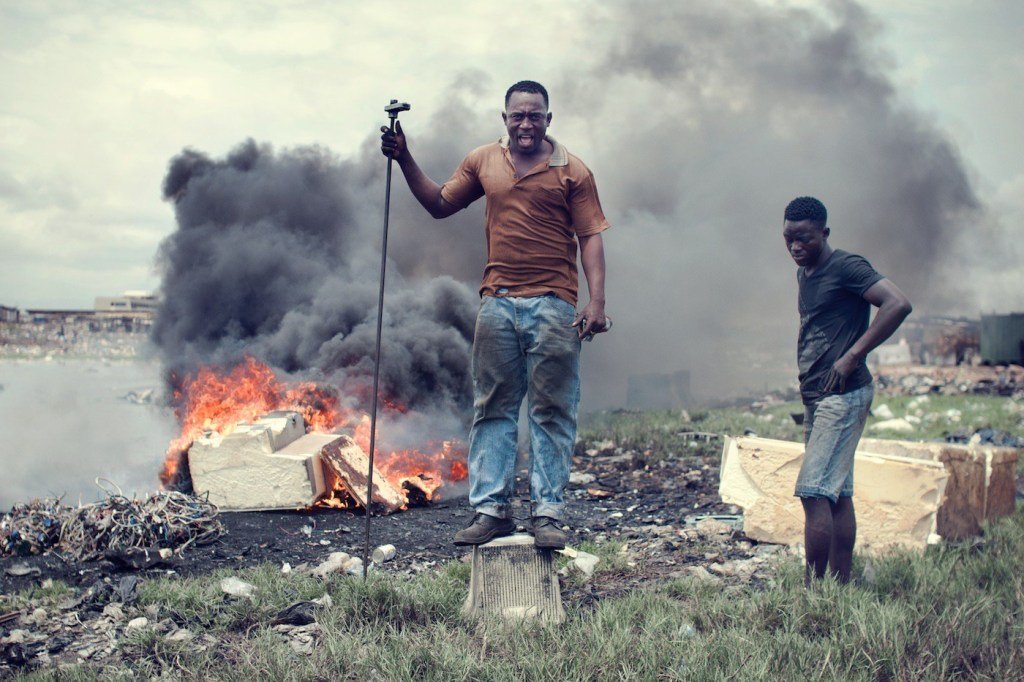The question that everyone should be asking about the new iPhone - What's actually happening to all our old phones?
E-WASTE is a problem & the tech companies should be working on a solution rather than another Upgrade
This week was a big APPLE news week! Especially for those patiently waiting to upgrade their old smart phone device. You haven't had to scroll long on your phones this week see the 3 camera images and you can just imagine the future queues which will soon litter the streets of every city in the world outside Apple stores. However, “iPhone Upgrade Season” also means an avalanche of E-WASTE as millions of users ditch their old phones, cases & accessories in what has been referred to as “the smartphone funeral.” Apple's senior vice president of worldwide marketing Phil Schiller talks about the new iPhone 11 Pro on Tuesday, Sept. 10, 2019.Justin Sullivan / Getty Images
Apple's senior vice president of worldwide marketing Phil Schiller talks about the new iPhone 11 Pro on Tuesday, Sept. 10, 2019.Justin Sullivan / Getty Images
So how big is the problem
In 2018, 1.56 billion smartphones were sold worldwide, in the first quarter of 2019, approx. 88% of all smartphones sold to end users were phones with Android operating systems. The worrying thing about this and also the honest number, which should be mentioned at the same time as Apple’s predicted sales figures for the new iPhone, is the number of phones that get the heave-ho as a direct result of them bringing out a shiny new one. With little thought, unfortunately, most end up in drawers, storage bins, & landfills, often leaching chemicals into the soil. In fact, electronics account for up to 70% of landfills’ toxic waste.Admirably, Apple is taking action by offering to recycle old iPhones for free. Yet, only about 12% will actually be "properly" recycled through the program, or a certified e-waste recycler. As consumers, we feel good about this – we feel we did the responsible, eco-friendly thing with our old device and we may even post about it using our new shiny device. Image by Kevin McElvaney
Image by Kevin McElvaney
The biggest myth of all is E-Waste recycling
The issue is, there is a myth surrounding e-waste “recycling” and the problem is that myth is a real problem.If the recycler is a reputable organisation, it will first check to see whether your electronics can be refurbished and reused. If so, the data is erased (well you would hope right) and either donated or resold on. Devices that won’t sell are typically shipped to distributors in South America or Asia.If the electronics are past the point of no return, they are sent to recycling plants and put through powerful, all purpose shredders. Metal components are then shipped to a handful of registered smelters, where they are then melted down. Perhaps some of the circuit board metals, including gold and palladium are recovered from the molten liquid but the truth is the vast majority of materials are left to burn, releasing chloride, mercury and other vapours into the atmosphere. Saying this, smelting is still the preferred option as the alternatives are far worse however for every “above board recycler” there will be a number of others making money by collecting e-waste, packing it into shipping containers and selling it through networks of middle men in countries like China and India.Walk the streets of e-graveyards like Agbogbloshie in West Africa or similar sites and you’ll see 100’s of micro entrepreneurs essentially cooking printed circuit boards to extract the metals within. During this process, these workers are exposed to toxic fumes from the nickel, mercury and cadmium to name a few which leak into the air, drinking water and ground which consequently lead to a number of life-threatening health problems.Globally, e-waste is the fastest growing stream of waste. With over 50 million tons of e-waste generated every year, global estimates put the recycling rate for all electronics at around just 20%. Image by Kevin McElvaney
Image by Kevin McElvaney
So what can we do as consumers and designers
It’s time to upgrade not just our phones, but we believe our approach to ensuring our obsolete tech products don't end up in landfills. Our best hope lies in a much bigger shift in perspective – ideally having brands and manufacturers design expressively with reusability in mind. This cradle-to-cradle approach to production is the cornerstone of the circular economy movement. The ideal end goal is for customers to demand that new phones can separate into component parts at the touch of a button, freeing up the materials to re-enter the supply chain.We need to be asking our favourite tech brands how they’re addressing e-waste. Hold them accountable to do their part and possibly invest a small percentage of their next years marketing budget annually into research and design to decrease e-waste instead of selling more phones. We understand that these companies will always look at the economics first but we really believe the power is in the buyer’s hands and if consumers start demanding companies invest in better design to combat e-waste and ensure a cradle-to-cradle approach rather than an “upgrade“ approach then it may be a better way to let our phones meet the end of their life cycle.

